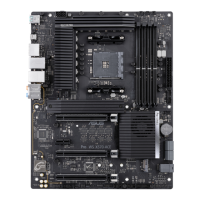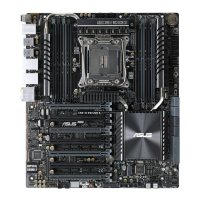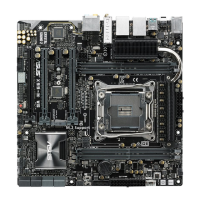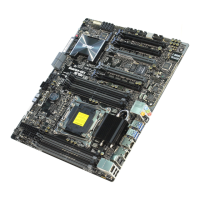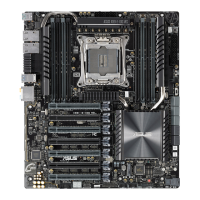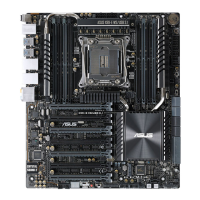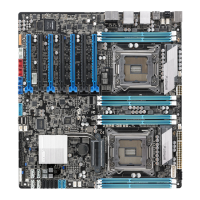Do you have a question about the Asus WS X299 SAGE and is the answer not in the manual?
Precautions to prevent electrical shock hazards during system handling and operation.
Guidelines for safe handling, installation, and environmental considerations for the motherboard.
Details the manual's structure and where to find additional product information.
Explains the use of bold text, italics, and key notation for clarity.
Details CPU socket, chipset, memory support, and expansion slot configurations.
Covers storage interfaces, LAN controllers, USB ports, and audio features.
Highlights features like Overclocking, Power Control, and ASUS proprietary technologies.
Introduces the motherboard, detailing its physical layout and key components.
Guides on installing the CPU and system memory modules onto the motherboard.
Details the PCIe expansion slots and various internal connectors on the motherboard.
Explains onboard buttons, switches, jumpers, and LEDs for system control and status.
Instructions for installing the motherboard into the PC chassis.
Detailed steps for correctly installing the CPU and memory modules.
Guides for installing CPU heatsink, connecting power, and storage devices.
Connecting front panel I/O, installing expansion cards, and M.2 SSDs.
Covers the process and methods for updating the motherboard's BIOS.
Details on rear panel connectors and audio I/O port configurations.
Guidance on starting the system for the first time and proper shutdown procedures.
Introduction to BIOS, its functions, and how to enter the setup program.
Overview of the two BIOS modes and how to navigate their interfaces.
Detailed explanations of BIOS menus like QFan, EZ Tuning, My Favorites, and Main.
Configuration options for advanced system settings, monitoring, boot order, and utilities.
Options for saving changes, loading defaults, and updating the BIOS firmware.
Explains different RAID levels (0, 1, 5, 10) and their operational benefits.
Steps to configure RAID using Intel® Rapid Storage Technology in the BIOS.
Guides on Intel® VROC setup and installing RAID controller drivers for OS.
Using Intel® RST Option ROM and creating RAID driver disks for OS installation.
Procedures for installing and enabling AMD® CrossFireX™ with multiple GPUs.
Steps for installing and enabling NVIDIA® SLI™ with multiple graphics cards.
Visual system connection overview and a table of POST error codes.
Includes FCC, ISED, VCCI, KC compliance, REACH, and RF exposure information.
Contact details for ASUS support and official product conformity declaration.
| USB 2.0 ports quantity | 4 |
|---|---|
| Ethernet LAN (RJ-45) ports | 2 |
| VGA (D-Sub) ports quantity | 0 |
| USB 3.2 Gen 1 (3.1 Gen 1) Type-A ports quantity | 6 |
| USB 3.2 Gen 2 (3.1 Gen 2) Type-A ports quantity | 1 |
| EPS power connector (8-pin) | Yes |
| Number of SATA III connectors | 8 |
| PCI Express x16 slots | 7 |
| Supported memory types | DDR4-SDRAM |
| Maximum internal memory | 128 GB |
| Supported memory clock speeds | 2133, 2400, 2666, 3600, 4000, 4133, 4200 MHz |
| RAID levels | 0, 1, 5, 10 |
| Supported storage drive interfaces | SATA III |
| Wi-Fi | No |
| LAN controller | Intel I210-AT, Intel I219LM |
| Ethernet interface type | Gigabit Ethernet |
| Cables included | SATA |
| Storage temperature (T-T) | -40 - 70 °C |
| Operating temperature (T-T) | 10 - 35 °C |
| Storage relative humidity (H-H) | 20 - 90 % |
| Parallel processing technology support | 4-Way CrossFireX, 4-Way SLI |
| Motherboard chipset | Intel® X299 |
| Audio output channels | 7.1 channels |
| Motherboard form factor | SSI CEB |
| Processor socket | LGA 2066 (Socket R4) |
| Processor manufacturer | Intel |
| Compatible processor series | Intel® Core™ X-series |
| Harmonized System (HS) code | 84733020 |
| Depth | 267 mm |
|---|---|
| Width | 305 mm |





